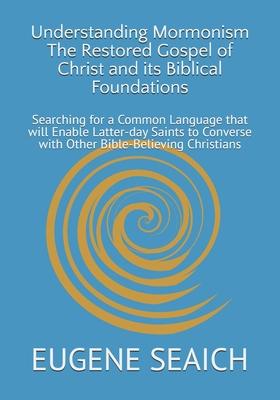In an era where religious discourse is often marred by misunderstanding and misrepresentation, "Mormonism and the Restored Gospel of Christ" emerges as a beacon of clarity and scholarship. This book is not merely an apologetic defense of Mormon theology but a profound exploration of its roots, its alignment with early Christian doctrines, and its relevance in contemporary religious dialogue.
Eugene Seaich out with a dual purpose: to elucidate the tenets of Mormonism for those outside the faith and to deepen the understanding of these doctrines among Latter-day Saints themselves. The book's strength lies in its ability to bridge these audiences, offering a narrative that is both accessible to the uninitiated and enriching for the devout.
Central to the book is the argument that many doctrines unique to Mormonism, often dismissed as "unbiblical" or "non-Christian," were in fact integral to early Christian belief. Dr. Seaich meticulously documents how concepts such as the preexistence of the soul, the Three Degrees of Glory, and the deification of man were well-known among early Christians and have been substantiated by modern scholarship. This historical context not only validates these doctrines but also situates Mormonism within the broader Christian tradition.
One of the most compelling sections of the book is its discussion on salvation. The author deftly navigates the theological complexities surrounding grace, works, judgment, and reward. By distinguishing between salvation as "redemption from sin" and as "a reward for goodness," the book offers a nuanced understanding that reconciles seemingly contradictory scriptural statements. This clarity is invaluable for readers from various Christian denominations who grapple with these concepts.
The exploration of the Atonement, described as "At-One-Ment," is particularly enlightening. The author draws from the writings of Paul and John to illustrate how believers can achieve oneness with the Divine. This spiritual union, central to Mormon soteriology, transcends mere moral striving and taps into a transformative righteousness that is both divine and accessible.
Furthermore, the book delves into the nature of God and the concept of deification. It challenges the traditional Trinitarian view that separates God from humanity, advocating instead for a "participatory monotheism" where humans can share in God's divine nature. This theological perspective not only aligns with early Christian thought but also offers a hopeful vision of human potential and destiny.
Dr Seaich does not shy away from addressing controversial aspects of Mormon theology. By incorporating the findings of non-LDS scholars, the book reinforces the legitimacy of its claims and demonstrates that many Mormon beliefs have ancient precedents. This scholarly rigor is complemented by a clear and engaging writing style, making complex theological concepts accessible to a broad readership.
In conclusion, "Mormonism and the Restored Gospel of Christ" is a groundbreaking work that invites readers to reconsider their preconceptions about Mormonism. It presents a well-reasoned and thoroughly researched case for the continuity of Latter-day Saint doctrines with early Christian beliefs. For Mormons, it is a source of affirmation and deeper understanding; for others, it is an invitation to a respectful and informed dialogue. This book is a must-read for anyone interested in the intersections of history, theology, and faith.
